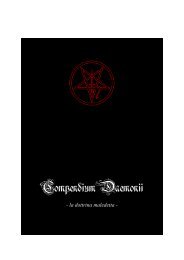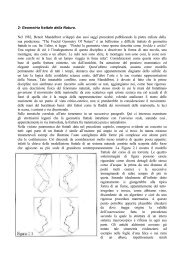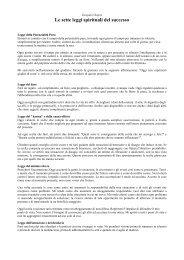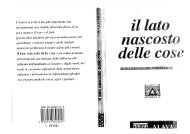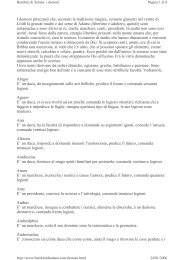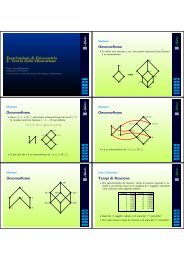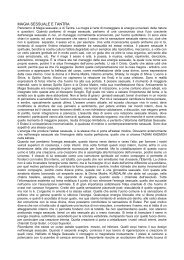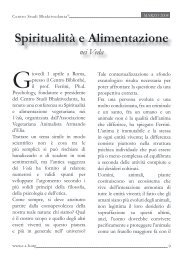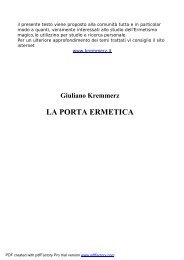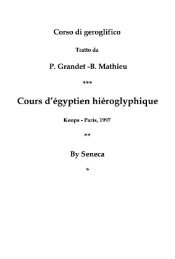8 ~ TALIBANof diverse and exotic ethnic groups who live in its high, snow-boundvalleys.In the southern foothills of the Hindu Kush lies Kabul; the adjoining 1valleys are the most agriculturally productive region in the country. West-1em and southern Afghanistan marks the eastern end of the Iranian plateau- flat, bare and arid with few towns and a sparse population. Much Iof this region is just called 'registan' or desert by local Afghans. The!exception is the oasis town of Herat, which has been a centre of civiliza-ltion for more than 3,000 years.North of the Hindu Kush the bare Central Asian steppe begins its long Isweep, which stretches thousands of miles north into Siberia. With itslextremes of climate and terrain the north's Turkic peoples are some of Ithe toughest in the world and make the fiercest of fighters. In easternlAfghanistan lie smaller mountain ranges including the Suleman rangewhich straddle the border with Pakistan and are populated on both sidesby the Pashtun tribes. Passes through these mountains such as the famousKhyber Pass have for centuries given conquerors access to the fertileIndian plains.Only 10-12 per cent of Afghanistan's terrain is cultivable and mostfarms, some hanging from mountain slopes, demand extraordinaryamounts of labour to keep them productive. Until the 1970s nomadism -Ithe grazing of goats and the fat-tailed Afghan sheep - was a major sourceof livelihood and the Kochi nomads travelled thousands of miles everyyear in Pakistan, Iran and Afghanistan in search of good pasture.Although the war against the Soviets destroyed Kochi culture and liveli-ihood in the 1980s, animal herding is still vital in sustaining impoverishedfarmers. Yesterday's Afghan nomads are today's traders and truck-drivers,who are a crucial support base and revenue generator for the Taliban byrunning trucks along the smuggling routes across Afghanistan.Roads and routes have been at the centre of Afghanistan since the 1dawn of history. The landlocked territory was the crossroads of Asia andthe meeting place and battleground for two great waves of civilization*the more urbane Persian empires to the west and the Turkic nomadicempires to the north in Central Asia. As a result Afghanistan ialimmensely rich in archaeological remains.For these two ancient civilizations, which ebbed in greatness and con-1quest according to the momentum of history, control over Afghanistanwas vital for their survival. At other times Afghanistan served as a bufferkeeping these two empires apart, while at other times it served as a COMridor through which their armies marched north to south or west to eastwhen they desired to invade India. This was a land where the first ancientreligions of Zoroastrianism, Manichaeanism and Buddhism flourished.Balkh, the ruins of which are still visible a few miles from Mazar-e-Sharif>INTRODUCTION: AFGHANISTAN'S HOLY WARRIORS ~ 9is according to UNESCO one of the oldest cities in the world and it wasa thriving centre of Buddhist, Persian and Turkic arts and architecture.It was through Afghanistan that pilgrims and traders working theancient Silk Route carried Buddhism to China and Japan. Conquerorsswept through the region like shooting stars. In 329 BC the MacedonianGreeks under Alexander the Great conquered Afghanistan and CentralAsia and went on to invade India. The Greeks left behind a new, vibrantBuddhist-Greek kingdom and civilization in the Hindu Kush mountains -the only known historical fusion between European and Asian cultures.By 654 AD Arab armies had swept through Afghanistan to arrive atthe Oxus river on the border with Central Asia. They brought with themtheir new religion of Islam, which preached equality and justice andquickly penetrated the entire region. Under the Persian Saminid dynastywhich lasted from 874 to 999 AD, Afghanistan was part of a new Persianrenaissance in arts and letters. The Ghaznavid dynasty ruled from 977 to1186 and captured north west India Punjab and parts of eastern Iran.In 1219 Genghis Khan and his Mongol hordes swept through Afghanistandestroying cities such as Balkh and Herat and piling up mounds ofdead bodies. Yet the Mongols contributed too, by leaving behind themodern day Hazaras - who were the result of inter-marriage between theMongols and local tribes.In the next century Taimur, or Tamerlane as he is called in the West,a descendent of Genghis Khan, created a vast new empire across Russiaand Persia which he ruled from his capital in Samarkand in modern-dayUzbekistan. Taimur captured Herat in 1381 and his son Shah Rukhmoved the capital of the Timurid empire to Herat in 1405. The Timurids,a Turkic people brought the Turkic nomadic culture of Central Asiawithin the orbit of Persian civilization, establishing in Herat one of themost cultured and refined cities in the world. This fusion of Central Asianand Persian culture was a major legacy for the future of Afghanistan. Acentury later the emperor Babur, a descendent of Taimur, visited Heratand wrote, 'the whole habitable world had not such a town as Herat'. 4For the next 300 years the eastern Afghan tribes periodically invadedIndia, conquering Delhi and creating vast Indo-Afghan empires. TheAfghan Lodhi dynasty ruled Delhi from 1451 to 1526. In 1500 Taimur'sdescendent Babur was driven out of his home in the Ferghana valley inUzbekistan. He went on to conquer first Kabul in 1504 and then Delhi.He established the Mogul dynasty which was to rule India until the arrivalof the British. At the same time Persian power declined in the west andHerat was conquered by the Uzbek Shaybani Khans. By the sixteenthcentury western Afghanistan again reverted to Persian rule under theSafavid dynasty.This series of invasions resulted in a complex ethnic, cultural and reli-
10 ~ TALIBANgious mix that was to make Afghan nation-building extremely difficult.Western Afghanistan was dominated by speakers of Persian or Dari as theAfghan Persian dialect is known. Dari was also spoken by the Hazaras incentral Afghanistan, who were converted to Shiism by the Persians,thereby becoming the largest Shia group in an otherwise Sunni territory.In the west the Tajiks, the repositors of Persia's ancient culture also spoke jDari. In northern Afghanistan the Uzbeks, Turcomans, Kyrgyz and others jspoke the Turkic languages of Central Asia. And in the south and east thePashtun tribes spoke their own tongue Pashto, a mixture of Indo-Persianlanguages.It was the southern Pashtuns who were to form the modern stateAfghanistan at the historical conjuncture when the Persian Safavid dyiasty in the west, the Moguls in India and the Uzbek Janid dynasty wereall in a period of decline in the eighteenth century. The Pashtun tribeswere divided into two major sections, the Ghilzai and Abdali who latercalled themselves Durrani, which frequently competed against each other.The Pashtuns trace their genealogy to Qais, a companion ofProphet Mohammed. As such they consider themselves a Semitic racalthough anthropologists consider them to be Indo-Europeans, who haveassimilated numerous ethnic groups over the course of history. TheDurranis claim descent from Qais's eldest son Sarbanar while the Ghilzaisclaim descent from his second son. Qais's third son is said to be theancestor of other diverse Pashtun tribes such as the Kakars inand the Safis around Peshawar. In the sixth century Chinese and Indissources speak of the Afghans/Pashtuns living east of Ghazni. These tribbegan a westward migration to Kandahar, Kabul and Herat from theteenth century. By the next century the Ghilzais and Durranis weralready fighting each other over land disputes around Kandahar. Tathe Ghilzai homeland lies south of the Kabul river between the SaKoh and Suleman range on the east to Hazarajat in the west and dovto Kandahar in the south. 5In 1709, Mir Wais, the chief of the Hotaki tribe of Ghilzai Pashtin Kandahar rebelled against the Safavid Shah. This was partly a resultof the Shah's attempts to convert the fervently Sunni Pashtuns inttShias - a historical animosity that was to re-emerge with the Taliban'^hostility towards Iran and Afghan Shias three centuries later.A few years later Mir Wais's son defeated the Safavids and conquerIran. But the Afghans were driven out of Iran in 1729. As Ghilzai poweebbed, their traditional rivals in Kandahar, the Abdalis, formedconfederation and in 1747 after a nine-day Loya Jirga or meeting of tribchiefs, they chose Ahmad Shah Abdali as their king. The tribalwrapped a turban around his head and placed blades of grass in it, si)nifying loyalty. The Loya Jtrga was to become the traditional legal instINTRODUCTION: AFGHANISTAN'S HOLY WARRIORS 11ment which legitimized new rulers thus avoiding a hereditary monarchy.The rulers themselves could claim that they were elected by the tribesrepresented in the Jirga. Ahmad Shah changed the name of the Abdaliconfederation to Durrani, united all the Pashtun tribes and began a seriesof major conquests, quickly taking control over much of modern dayPakistan.By 1761 Ahmad Shah Durrani had defeated the Hindu Mahrattas andcaptured the Delhi throne and Kashmir, thereby creating the first Afghanempire. Considered the father of the Afghan nation, Ahmad ShahDurrani was buried in an ornate mausoleum in his capital Kandahar,where Afghans still come to pray. Many Afghans have conferred a kindof sainthood on him. His son Taimur Shah moved the empire's new capitalfrom Kandahar to Kabul in 1772, making it easier to control thenewly conquered territories north of the Hindu Kush mountains and eastof the river Indus. By 1780 the Durranis had concluded a treaty with theAmir of Bukhara, the principal Central Asian ruler, which designated theOxus or Amu Darya river as the border between Central Asia and thenew Pashtun state of Afghanistan. It was the first border delineation thatmarked the northern boundary of the new Afghanistan.In the next century the Durranis were to lose their territories east ofthe Indus river while feuds between various Durrani clans dissipated theirpower. However, one or another Durrani clan was to rule Afghanistan forover 200 years until 1973, when King Zahir Shah was deposed by hiscousin Mohammed Daud Khan and Afghanistan was declared a Republic.Meanwhile the bitter rivalry between the Ghilzai and the Durrani Pashtunswas to continue and intensify in the aftermath of the Soviet invasionof Afghanistan and the subsequent emergence of the Taliban.The weakened and bickering Durrani kings had to hold off two newempires, the British in the east and the Russians to the north. In thenineteenth century, fearful of an ever expanding Russian empire in CentralAsia which might covet Afghanistan for a thrust against Britain'sIndian empire, the British made three attempts to conquer and holdAfghanistan until they realised that the intractable Afghans could bebought much more easily than fought. The British offered cash subsidies,manipulated the tribal chiefs and managed to turn Afghanistan into aclient state. What followed was 'the Great Game' between Russia andBritain, a clandestine war of wits and bribery and occasional military pressureas both powers kept each other at a respectful distance by maintainingAfghanistan as a buffer state between them.The feuds amongst the ruling Durranis which were fuelled by Britishintelligence officers ensured that Afghan kings remained weak anddependent on British largesse to make up for their inability to raise revenues.As a consequence the non-Pashtun groups in the north exercised
- Page 1 and 2: YALE NOTA BENE"The broader storyher
- Page 3 and 4: TalibanMilitant Islam,Oil and Funda
- Page 5 and 6: Vi ~ CONTENTSChapter 8A Vanished Ge
- Page 7 and 8: AFGHANISTAN•^ UZBEKISTAN J TAJIKI
- Page 9 and 10: 2 ~ TALIBANaccounts for some 40 per
- Page 11: "6 ~ TALIBANgas riches of landlocke
- Page 15 and 16: Part 1History of theTaliban Movemen
- Page 17 and 18: 18 ~ ISLAM OIL AND THE NEW GREAT GA
- Page 19 and 20: 22 ~ ISLAM OIL AND THE NEW GREAT GA
- Page 21 and 22: 26 ~ ISLAM OIL AND THE NEW GREAT GA
- Page 23 and 24: 30 ~ ISLAM OIL AND THE NEW GREAT GA
- Page 25 and 26: 34 TALIBANKabul- Hikmetyar had alli
- Page 27 and 28: 38 ~ TALIBANrHERAT 1995: GOD'S INVI
- Page 29 and 30: 42 ~ TALIBANdo manage to take Kabul
- Page 31 and 32: J46 ~ TALIBANgreater weight to UN e
- Page 33 and 34: 50 ~ TALIBANas they hung from steel
- Page 35 and 36: 54 ~ TALIBANthey would help rearm t
- Page 37 and 38: 58 TALIBANGul Mohammed Pahlawan, Gh
- Page 39 and 40: 62 TALIBAN2,500 Taliban, who had re
- Page 41 and 42: 66 TALIBANshould throw all aid agen
- Page 43 and 44: 70 ~ TALIBANyears of battle and hel
- Page 45 and 46: 74 ~ TALIBANThousands of Hazaras we
- Page 47 and 48: 78 TALIBANhas become a plague,' sai
- Page 49 and 50: NEW STYLE FUNDAMENTALISM OF THE TAL
- Page 51 and 52: 86 TALIBANsity students - Hikmetyar
- Page 53 and 54: 90 TALIBANSharia was heavily influe
- Page 55 and 56: 94 TALIBANinflamed the debate in th
- Page 57 and 58: 98 TALIBANizing factor of Islam, it
- Page 59 and 60: 102 TALIBANadministrations made the
- Page 61 and 62: 106 ~ TAUBANfrom working, but it no
- Page 63 and 64:
TALIBANUniversity, she held down a
- Page 65 and 66:
114 TALIBAN A VANISHED GENDER 115Ta
- Page 67 and 68:
118 TALIBANUS$1,300 - a small fortu
- Page 69 and 70:
122 TALIBANper cent of the total Pa
- Page 71 and 72:
126 TALIBANequipment, no electricit
- Page 73 and 74:
130 ~ TALIBANfight with the Mujahed
- Page 75 and 76:
134TALIBANAugust 1996 noted that Bi
- Page 77 and 78:
138 ~ TALIBANwho were using the Kho
- Page 79 and 80:
11DICTATORS AND OILBARONS: THE TALI
- Page 81 and 82:
146 TALIBAN DICTATORS AND OIL BARON
- Page 83 and 84:
150 — TALIBANgrowth of beards and
- Page 85 and 86:
154TALIBAN1998 when international o
- Page 87 and 88:
158 ~ TALIBANaround Afghanistan? Af
- Page 89 and 90:
162 TALIBAN ROMANCING THE TALIBAN 1
- Page 91 and 92:
166 TALIBAN ROMANCING THE TALIBAN 1
- Page 93 and 94:
ROMANCING THE TALIBAN 2: 1997-99 17
- Page 95 and 96:
174 — TALIBANnon-Russian pipeline
- Page 97 and 98:
178 — TALIBANROMANCING THE TALIBA
- Page 99 and 100:
182 ~ TALIBANApril 1999. 'The US ha
- Page 101 and 102:
186 ~ TALIBANters or the transport
- Page 103 and 104:
190 ~ TALIBANThis Wild West of free
- Page 105 and 106:
194 ~ TALIBANgovernance. Pakistani
- Page 107 and 108:
198 TALIBAN SHIA VERSUS SUNNI: IRAN
- Page 109 and 110:
202 TALIBAN SHIA VERSUS SUNNI: IRAN
- Page 111 and 112:
206 — TALIBANin Afghanistan - to
- Page 113 and 114:
210 — TALIBANand antagonism. The
- Page 115 and 116:
214 ~ TALIBANdrawn since 1996 - a P
- Page 117 and 118:
218 ~ TALIBANated and severely puni
- Page 119 and 120:
Origins of Members of the Taliban M
- Page 121 and 122:
APPENDIX 3 ~ 227Appendix 3A CHRONOL
- Page 123 and 124:
230 ~ TALIBANgraves near Shebarghan
- Page 125 and 126:
234 ~ TALIBAN8 June. US FBI places
- Page 127 and 128:
238 ~ TALIBAN1995 January16 MarchAp
- Page 129 and 130:
242 ~ TALIBANJune21 August10 Septem
- Page 131 and 132:
246 ~ TALIBANDupree, Nancy Hatch, A
- Page 133 and 134:
250 ~ NOTESChapter 31 Interview wit
- Page 135 and 136:
254 ~ NOTESmuddin, Religious Police
- Page 137 and 138:
258 NOTES13. The Japanese company M
- Page 139 and 140:
262 ~ NOTES28. Waxman, Sharon, 'A c
- Page 141 and 142:
Abbas, Mulla Mohammed 22,61,100Abda
- Page 143 and 144:
INDEX - 270Hazaras (continued)burea
- Page 145 and 146:
INDEX ~ 274nF»r\/FaliViar» milita
- Page 147:
INDEX ~ 278Talibans (continued)Sunn



